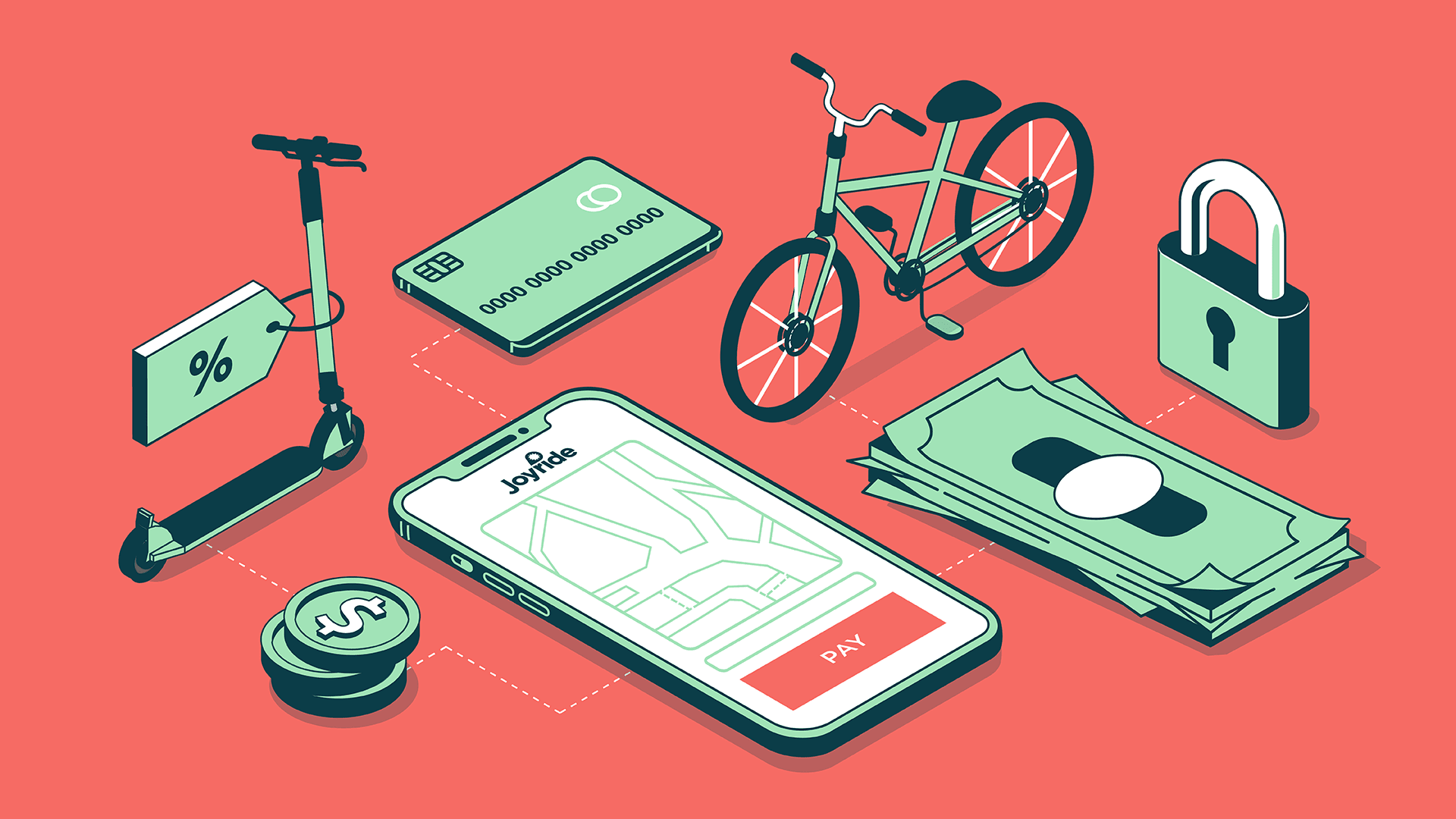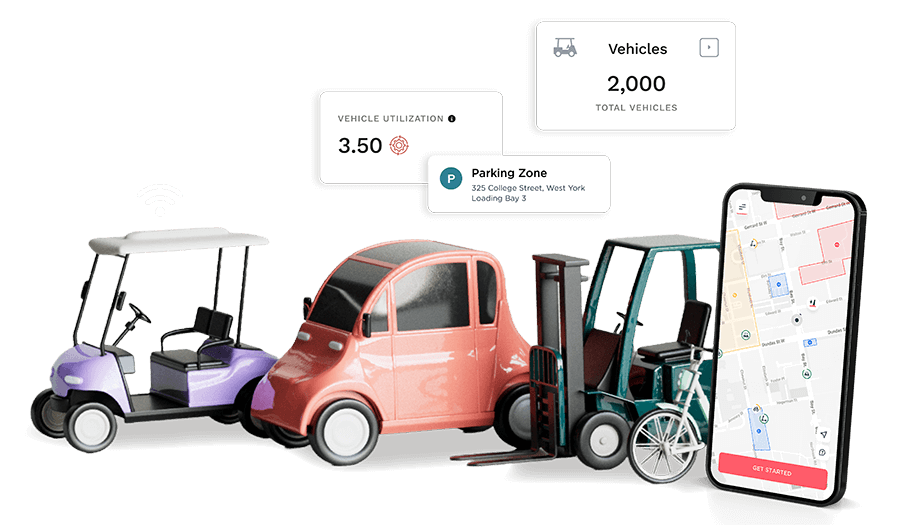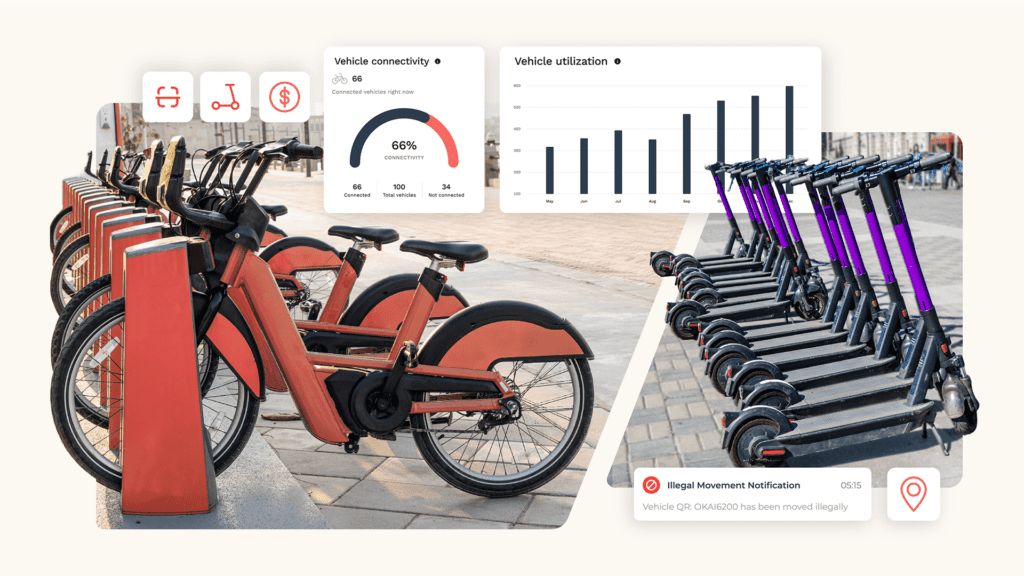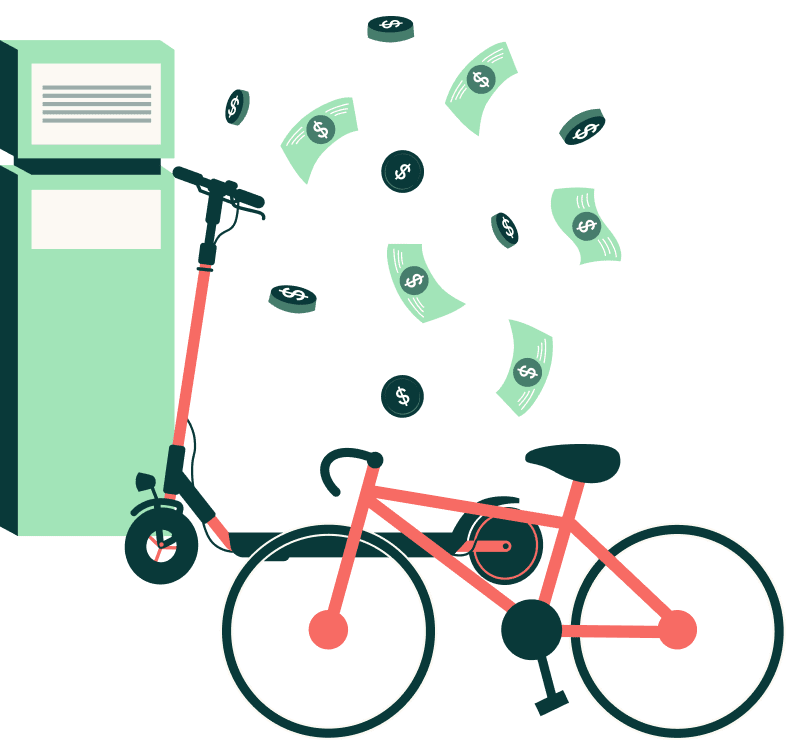Pricing is a powerful tool and a crucial element in managing a profitable public e-scooter or bike fleet. Yet with tighter regulations imposed by cities, mergers and acquisitions narrowing the market, and an increase in private ownership of micromobility vehicles, operators are seeking new ways to maintain their competitive edge.
It all comes back to pricing, but as we learned in our previous article on shared micromobility pricing strategies, attracting customers – without undercutting your earnings – isn’t easy.
To dive deeper into pricing tactics, we called in three experts for the second instalment of our Joyride Academy webinar series. Charles Farr, Product Manager at Zoba, Lars Christian Grødem-Olsen, Managing Director of Movability, and Andrew Miles, Joyride’s Head of Partnerships, discussed the standard pricing models of shared mobility, their efficacy and impact on rider behavior, and which new strategies have potential to reshape the industry.
In this article, we summarize the takeaways into. For the full goods, head over to Joyride Academy to watch the webinar recording (plus a Q&A with our guests!)
Pricing Tactic 1: Price e-scooter and bike share rides by their value
People make everyday purchasing decisions based on a multitude of factors. While price is certainly important, the true value of an e-scooter or bike ride is determined by the perceived benefits to the user. Are they in a hurry? Have they missed their bus? Are they riding with friends to the bar, or simply looking for a leisurely ride around the park?
Customers that engage with per-minute rentals are typically most influenced by the convenience of finding the nearest available vehicle at the desired location and time. The key word here is convenience. If you look to other industries such as food delivery, you’ll find plenty of proof that customers are willing to pay a premium for simplicity.
“[Most] riders are going to use a service when it is available for them when and where they need.” Charles said. Whether a scooter ride costs $0.40/minute or $0.50/minute won’t matter all that much to someone simply looking to get from A to B.
The magic of micromobility is that it is accessible to a wide market, but this also means that certain strategies will be more effective within certain niches and customer segments. While the exact per minute price might be secondary to a casual rider, it’s a serious consideration for commuters who ride daily to get to school or work.
Ride Passes and “subscriptions can encourage regular ridership and provide more predictable revenue streams,” Charles said, “but it’s not about having a one-size-fits-all approach.”
As a previous manager of Tier’s Nordic fleet, Lars Christian Grødem-Olsen advised that the best way to build market-specific pricing strategies is to speak directly to your end-users. “They’ll talk a lot about price” he said, “but they’ll also talk a lot about the service, and I think that’s what you ultimately need to priortize.”
Andrew agreed, citing his previous background leading operations in several American markets:
“I always appreciated in person, face-to-face feedback more than any kind of digital response,” he said. “One of my favorite things was to find our best hubs or parking bays, and approach people who were unlocking or parking a vehicle. It’s amazing what kind of insights you can get from just asking how they feel about something, and what you can do to change or influence their opinions.”
Pricing Tactic 2: Scooter and bike share prices shouldn’t be static
We know that efficient fleet management has huge implications to the bottom line, but as any operator can tell you, rebalancing (strategically distributing vehicles to capture demand) is difficult to get right! Cost-conscious operators tend to prioritize areas that already have a surplus of scooters, but this approach may actually be cannibalizing profits despite the high volume of rides in those areas.
As a Product Manager at Zoba, Charles has deep insights into the rebalancing efforts of micromobility operators around the world. “There’s often a lot of stranded assets in the sense of just vehicles that aren’t actually contributing very much” he said. “Even if they are getting rides, they’re probably taking rides from their neighbours. Those vehicles could serve really important roles in what you might call lower demand areas.”
Though supplying vehicles in places with low-demand might sound counterintuitive at first, offering flexible pricing to users who pick up a vehicle outside of the urban core can reveal areas of untapped demand. Charles noted that while “riders in suburban areas tend to be more price-sensitive than those in urban centers,” a little discount goes a long way. That first trip from the suburbs can ignite a chain reaction of follow-on rides in areas of peak demand–all without intervention from the field team.
This strategy becomes even more effective when users are incentivized to end their ride in specific areas, thereby easing the rebalancing burden. Or by offering a Premium Parking option, allowing them to park anywhere for an additional fee.
Charles, Lars and Andrew all agreed that if micromobility operators plan to use dynamic pricing, they should treat it more as an operational tool than a means to price gouge users, “It’s more about how you can incentivize a user to bring a vehicle back to a key point of origin or destination for future rides,” said Andrew.
Pricing Tactic 3: Be financially transparent with municipal micromobility partners
Legal operation of a public shared micromobility service is (usually) predicated on an operator paying an upfront permit fee, as well as agreeing to a continuous revenue share–either by percentage or per-ride tax.
Unfortunately, what city authorities often fail to recognize is that these fees can have a significant impact on the provision of the service and the subsequent cost to end users. “Revenue shares that are mandated as part of public sharing operations add costs to the operation which forces price increases,” Andrew said.
With his combined operational background, and experience consulting with cities, Lars had a unique perspective on how operators can bridge this gap of understanding: “If you want to earn the trust of a city official, you need to be transparent. I’ve recommended several operators to basically open up their books.”
Charles agreed, pointing out the importance of using ridership data to illustrate how certain SLAs affect the end-user. “If fees charged by the city are impacting your ability to invest a little bit more in operations, you’re not going to be able to deliver as good of a service to riders, and therefore the municipalities you’re working in”. He added that “There’s a lot of potential for continued collaboration, and pricing is a lever to drive that conversation.”
Plenty of municipal officials have reached this same conclusion and work hard to collaborate with operators in a way that works for everyone. “Ultimately, cities want operators to be profitable,” Charles said. “If you can show that a certain fee or revenue share model is having a negative effect, then that’s a really powerful tool.”
Unlocking future pricing tactics for shared micromobility
As the micromobility landscape continues to evolve, pricing remains at the forefront of innovation, creating new pathways for accessible, efficient and sustainable urban transportation.
Interested in unlocking new profit potential in your market? Email us at hi@joyride.city to continue the conversation.







